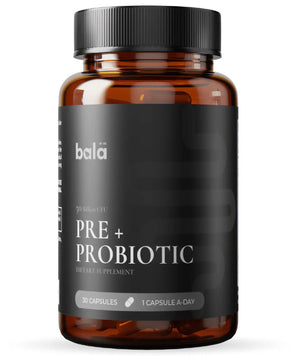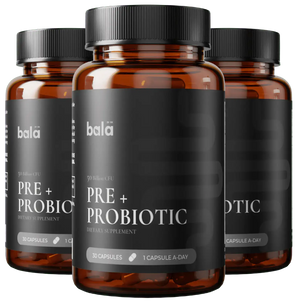Table of Contents
Introduction
Did you know that the gut is often referred to as our “second brain”? It plays a crucial role in our overall health, influencing everything from our mood to our metabolism. In the quest for effective weight loss solutions, many of us often find ourselves overwhelmed with conflicting information about what to eat and what to avoid. This can lead to confusion and frustration, particularly when it comes to traditional foods that we hold dear.
For those of us who love South Indian cuisine, the question often arises: Can we eat idli while trying to lose weight? This fluffy, steamed delicacy made from fermented rice and lentils is a staple in many households, and its nutritional profile might surprise you. In this blog post, we will dive deep into the world of idli, exploring its benefits, nutritional content, and how it can fit into our weight loss efforts.
We aim to clarify the misconceptions surrounding idli and highlight its potential as a weight-loss-friendly food. You will learn about its nutrient composition, the various types of idli, and how to enjoy it in a balanced diet. We will also touch upon the importance of gut health in relation to weight management, and how our flagship probiotic can support that journey.
So, are you ready to discover how idli can be a part of your weight loss journey? Let’s get started!
What is Idli?
Idli is a traditional South Indian dish made from a fermented batter of rice and urad dal (black gram). The fermentation process not only enhances its flavor but also increases its nutritional value, making it easier to digest. Idli is typically steamed, resulting in a light, fluffy texture that is both satisfying and versatile. It is often served with chutneys and sambar, a lentil-based vegetable stew, which adds further nutritional benefits.
Nutritional Profile of Idli
To understand if idli is suitable for weight loss, it is essential to look at its nutritional content. A standard idli, weighing about 50 grams, contains approximately:
- Calories: 50-100 calories (depending on the size and ingredients)
- Protein: 2-3 grams
- Carbohydrates: 11-15 grams
- Fat: Less than 1 gram
- Fiber: About 1 gram
- Vitamins and Minerals: Idli is rich in B vitamins (B1, B2, B3, B5, B9) and minerals like iron and calcium.
These values can vary slightly based on the specific ingredients and preparation methods used.
Benefits of Eating Idli for Weight Loss
1. Low in Calories
Idli is a low-calorie food, making it an excellent choice for those of us aiming for weight loss. With each idli containing only around 50-100 calories, we can enjoy a satisfying meal without consuming excessive calories. This allows us to incorporate idli into our diets while still achieving a calorie deficit, which is crucial for weight loss.
2. Minimal Fat Content
Another reason idli is weight-loss friendly is its low-fat content. Being steamed rather than fried, idlis are virtually fat-free, which is beneficial for those of us looking to reduce our fat intake. This can help us maintain a balanced diet without the added calories from unhealthy fats.
3. Rich in Nutrients
Idli is not just low in calories; it is also nutrient-dense. The combination of rice and urad dal provides a good source of protein, essential for muscle maintenance and repair. Additionally, the fermentation process enhances the availability of vitamins and minerals, contributing to overall health. This nutrient density can help us feel more satisfied, reducing the urge to snack between meals.
4. Promotes Satiety
The fiber content in idli plays a significant role in promoting satiety. Foods rich in fiber help us feel full for longer periods, which can prevent overeating and assist in weight management. By keeping our hunger at bay, idli can be a valuable ally in our weight loss journey.
5. Supports Digestive Health
Idli is a fermented food, which means it contains probiotics that can support gut health. A healthy gut microbiome is essential for proper digestion and can influence weight management. By incorporating idli into our diets, we can promote a healthy gut environment, helping our bodies function optimally.
6. Versatility
Idli is incredibly versatile. We can experiment with various ingredients to enhance its nutritional value. For instance, we can make ragi (finger millet) idli, oats idli, or vegetable idli to increase fiber content and add different tastes and textures. This versatility makes it easier to include idli in a balanced and varied diet.
Different Types of Idli for Weight Loss
To maximize the health benefits of idli, we can explore various types that cater to different nutritional needs and preferences:
1. Sooji Idli (Semolina Idli)
Sooji idli is made from semolina (sooji) instead of rice. It is light and quick to prepare, making it a popular choice for those of us looking for a quick meal. Its fiber content can aid digestion and promote satiety.
2. Ragi Idli (Finger Millet Idli)
Ragi idli is made using finger millet flour, which adds a nutty flavor and increases the fiber and calcium content. This makes it an excellent option for those aiming to control their weight while receiving additional nutrients.
3. Oats Idli
Oats idli incorporates oats into the batter, increasing the soluble fiber content. Oats are known for their cholesterol-lowering properties and can help regulate blood sugar levels. This idli variant is perfect for those looking to maintain heart health while managing their weight.
4. Vegetable Idli
Adding finely chopped vegetables to the idli batter not only enhances its nutritional profile but also adds color and flavor. This version can increase fiber content and provide additional vitamins and minerals.
5. Brown Rice Idli
Using brown rice instead of white rice increases the fiber and nutrient content of the idli. Brown rice is a whole grain that has more vitamins and minerals compared to its white counterpart, making it a healthier option for weight loss.
Portion Control: The Key to Weight Loss
While idli can be a healthy addition to our diets, portion control is crucial. Eating too many idlis, even if they are low in calories, can lead to excessive calorie intake. We recommend enjoying 2-3 idlis per meal, paired with nutritious accompaniments like sambar and chutney for a balanced meal. This approach not only keeps our meals satisfying but also allows us to enjoy the benefits of idli without overindulging.
The Role of Gut Health in Weight Loss
Our gut health is directly linked to our overall wellbeing, including weight management. A balanced gut microbiome can influence our metabolism, digestion, and even our cravings. By incorporating probiotics into our diets, we can support our gut health and, in turn, our weight loss efforts.
At Bala Health, we believe in the power of clean, science-backed probiotics to support our health from the inside out. Our flagship probiotic is formulated to help balance gut flora and support digestive health, making it an excellent companion on our weight loss journey.
Feel better from the inside out – Subscribe & Save.
Conclusion
In conclusion, idli can indeed be a valuable addition to our weight loss journey when consumed mindfully. Its low calorie and fat content, combined with its nutrient density and versatility, make it an excellent option for those of us looking to manage our weight effectively. By incorporating various types of idli into our diets and practicing portion control, we can enjoy this beloved South Indian dish without compromising our health goals.
As we continue our journey toward better health, let’s not forget the vital role of gut health. Supporting our digestive system with clean, science-backed probiotics can enhance our overall wellbeing and make our weight loss efforts more effective.
Are you ready to take the next step in your wellness journey? Take our 3-minute Weight-Loss Quiz to find your personalized gut-health roadmap, and discover how our probiotics can support your goals.
Remember, health is not a destination but a journey. Let’s embrace the power of food, knowledge, and community as we work towards feeling better from the inside out!
FAQ
Q: Is idli suitable for everyday consumption?
A: Yes, idli can be part of a daily diet if consumed in moderation. Its low calorie and fat content make it a healthy option.
Q: Can I eat idli if I have diabetes?
A: Idli can be consumed in moderation, but it’s essential to monitor blood sugar levels, as it has a moderate glycemic index. Pairing it with protein-rich sambar can help balance blood sugar spikes.
Q: How many idlis should I eat for weight loss?
A: 2-3 idlis per meal is generally recommended for weight loss, combined with nutritious accompaniments.
Q: What can I pair with idli for weight loss?
A: Pair idli with low-calorie chutneys and vegetable sambar to keep the meal balanced and nutritious.
Q: Does idli aid digestion?
A: Yes, the fermentation process involved in making idli promotes digestive health and can help ease occasional bloating.
By understanding the benefits of idli and how it can fit into our weight loss plans, we can enjoy this delicious dish while working towards our health goals.






